In Christianity, the “Holy Family” is the name of the family unit that consisted of Jesus, the Virgin Mary and Saint Joseph. Their joint representation is also common in the fine arts, and the Catholic Church celebrates the unit on a special holiday, the “Sunday of the Holy Family” on the Sunday after Christmas. The holiday has been observed in some areas since the 17th century, and Pope Leo XIII propagated it in 1893. Pope Benedict XV made observance of the holiday compulsory a century ago, in 1921.
Thus, it seems that on the threshold of the modern age, the leaders of Catholicism emphasised the fact that Jesus himself was born and raised in a family. According to the justifications used at the time, the decision was also related to the fact that the importance of families had seemed to wane in the Western world. Today, this sounds almost unbelievable. In the 21st century, it seems the role of the family had been unshakeable in the lives of our great grandparents. Now, when the Catholic Church announces a special year to celebrate families, even the concept of a family is the subject of debate.
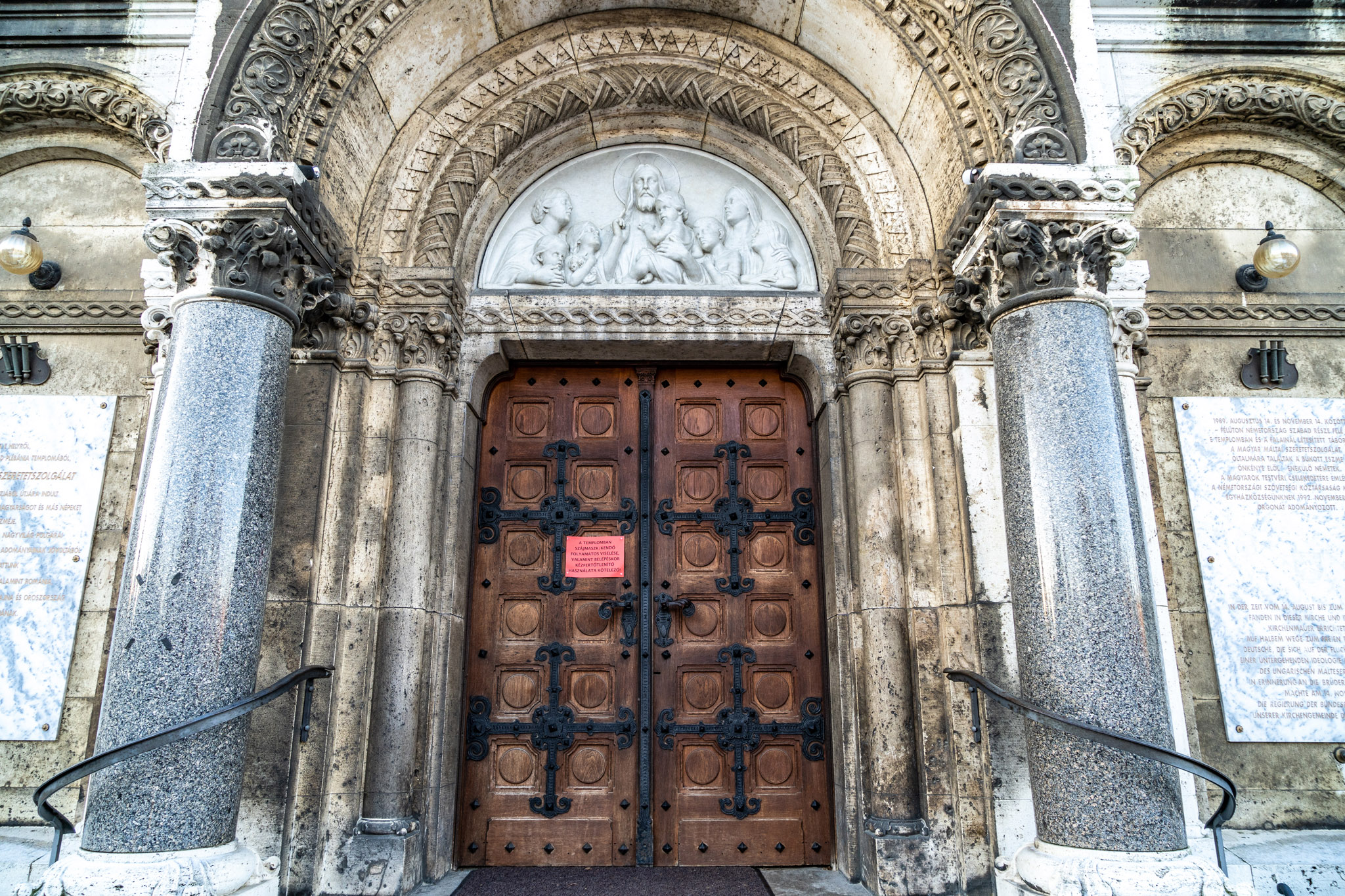
Romanesque revival gate of the Church of the Holy Family in Zugliget (Photo: Balázs Both/Pestbuda.hu)
The cult of the Holy Family, which was revived at the beginning of the 20th century, manifested itself in Budapest quickly. Mária Almásy, the chief of the order of the Loreto Sisters in Hungary, initiated the construction of a Catholic church in Zugliget, a sparsely populated area of the Buda hills, on a plot owned by the order. Education is the congregation's primary work, and thus they chose the Holy Family as the dedicatee of the planned church.
The 17 October 1909 issue of Pesti Hírlap published details about the initiative:
“The Loreto Sisters are planning to build a new English ladies want to build a new convent, boarding school and church on their plot in Zugliget, at a cost of three million Crowns. Although a Chapel would be enough for the convent, according to the application submitted to the Council, they hope to build a Church that would fit 1000 people, as the residents of Zugliget have long requested a church be built for them and their 500 Roman Catholic children. Naturally, this greatly increases the costs of construction. Therefore, they are asking for 500,000 Crowns in aid from the capital. In return for this support, the order has committed to bearing the burdens of maintaining the Chruch – tasks that would otherwise be overseen by the capital –, such as ensuring a Priest serves the congregation, mass is celebrated, all other religious functions observed, and ensuring that the church and roads leading to it remain accessible at all times.
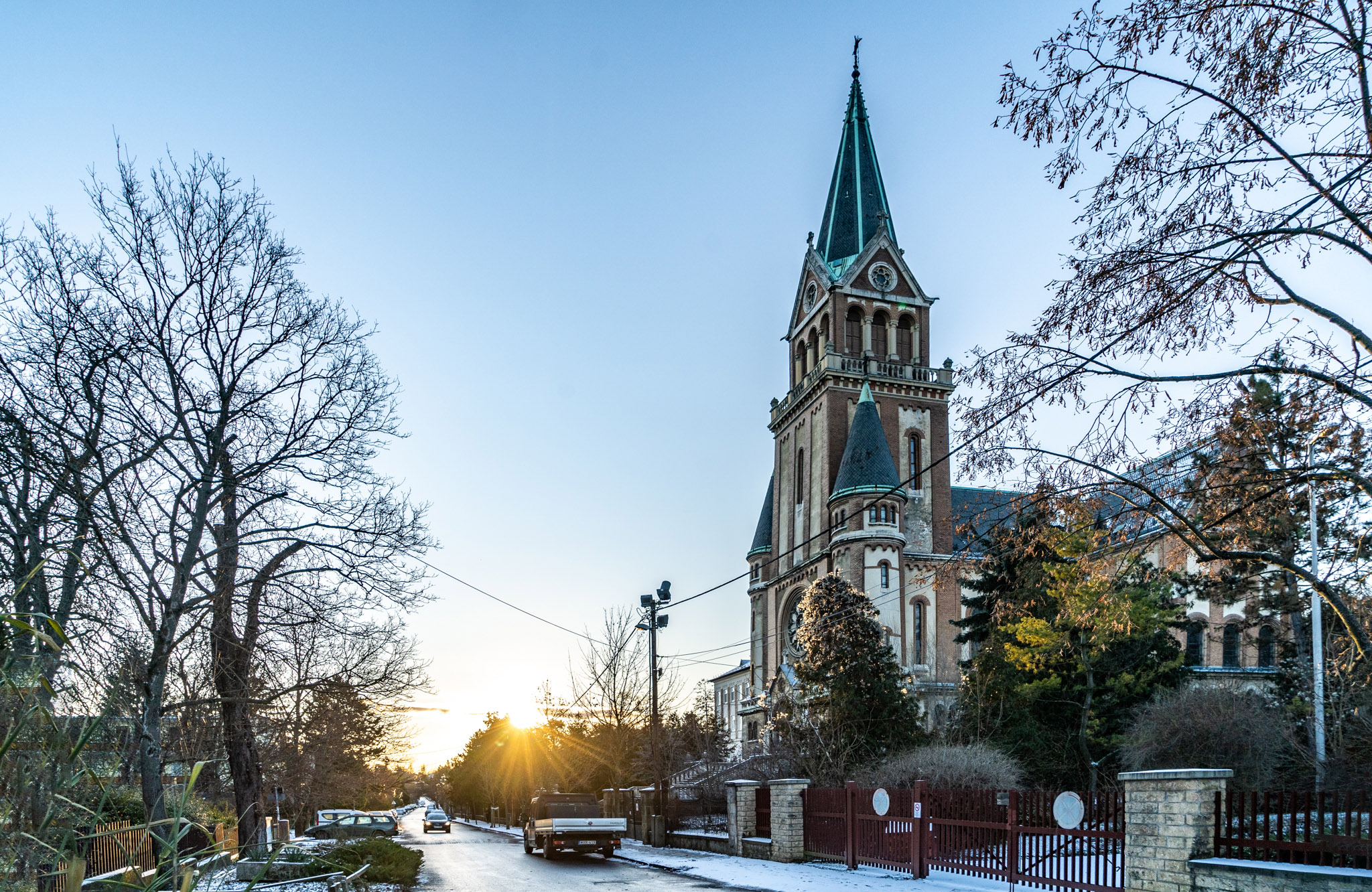
Szarvas Gábor Road in Zugliget with the Church of the Holy Family Parish (Photo: Balázs Both/Pestbuda.hu)
Construction soon began with support from the capital and the Ministry of Culture. Dezső Hültl, a renowned and popular architect of the time designed the Church. The plans drew on the convent church of the Loreto Sisters in Rathfarnham, Ireland and followed a Romanesque revival style. Imre Zsellér created the richly decorated windows of the church, its large rose window, the skylight at the crossing of the nave and transept and the massive mosaic of the Holy Family in the sanctuary. The latter is considered to be the largest single-theme mosaic in Central Europe. The neo-Gothic main altar is made of Rușchița marble and was designed by the Italian sculptor Del Amico Giuseppe in Budapest.
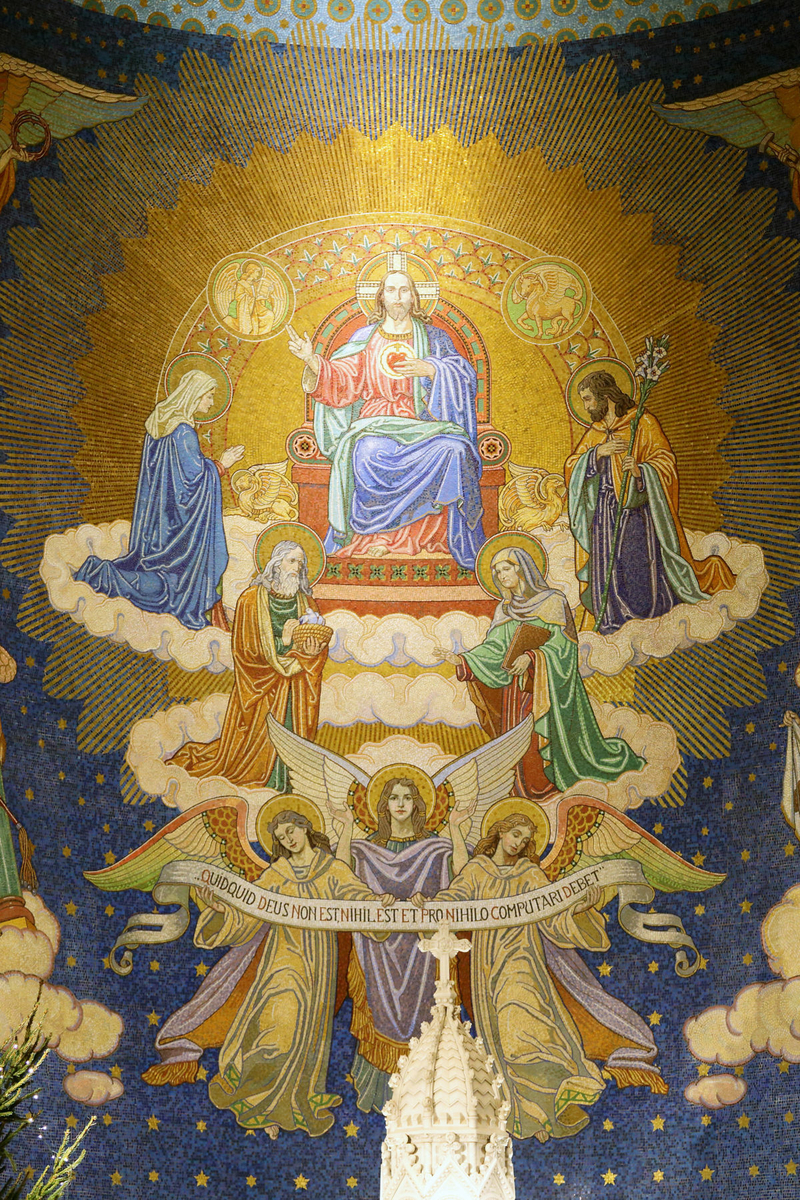
Mosaic of the Holy Family by Imre Zsellér in the sanctuary of the Church of the Holy Family in Zugliget. Considered the largest coherent mosaic in Central Europe (Photo: Website of the Church of the Holy Family Parish)
The church at 52 Szarvas Gábor Road in Zugliget was consecrated on 17 May 1917 by Prince-Primate János Csernoch. The school operated by the congregation was quickly built and opened in the 1927–1928 school year with 45 boarding school students.
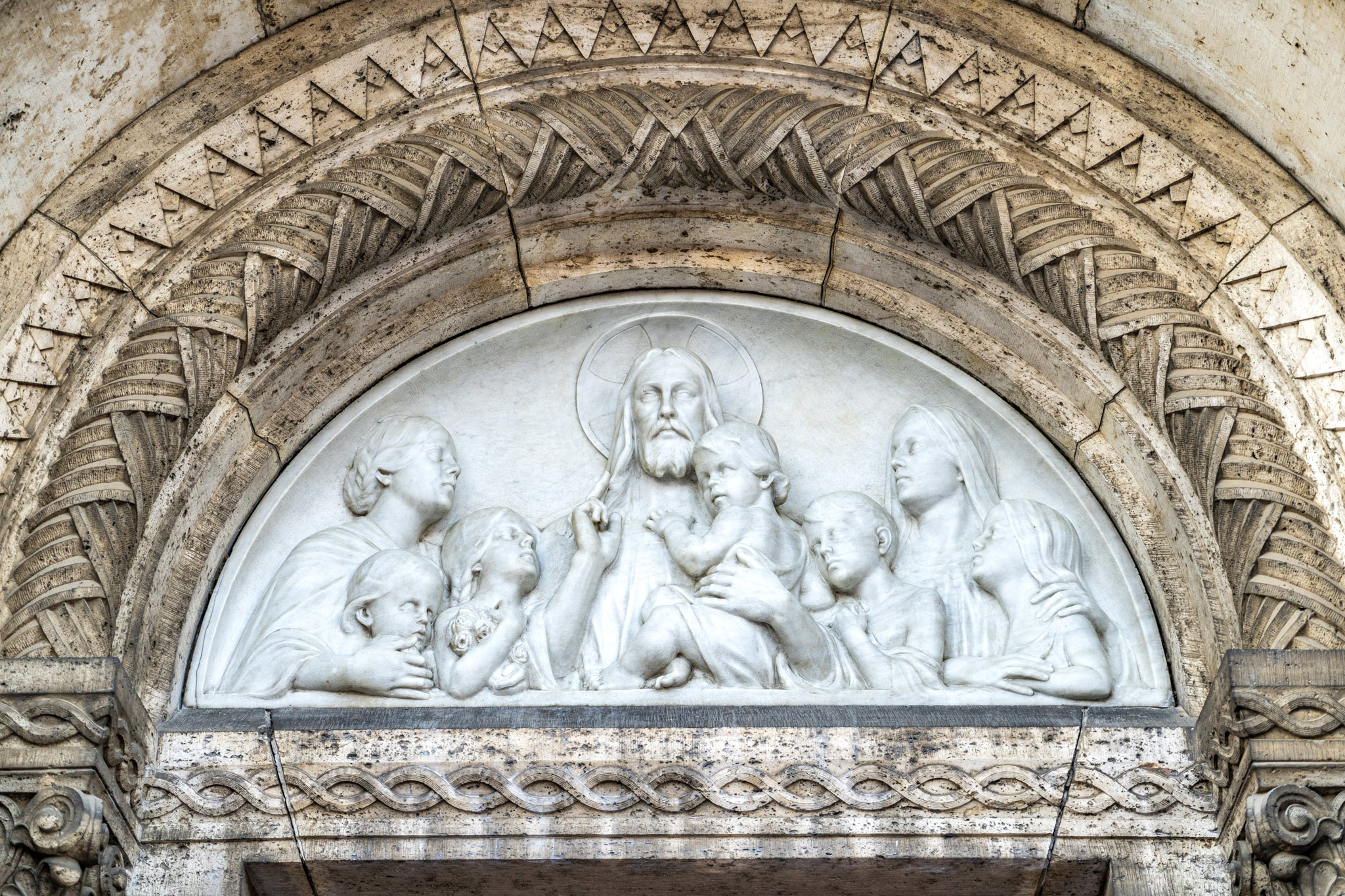
The relief by sculptor Viktor Vass above the entrance to the Church of the Holy Family in Zugliget (Photo: Balázs Both/Pestbuda.hu)
Thus the Church of the Holy Family has been standing in Buda since 1917. The faithful also turned their eyes of the Holy Family when they chose to dedicate the parish on Dalnok Street in Pest. The chapel at 25 Dalnok Street (now Székely Bertalan Street) was one of the supporting chapels established due to the influx of new residents to the capital after World War I, which led to immense growth and surpassed the capacity of existing churches.
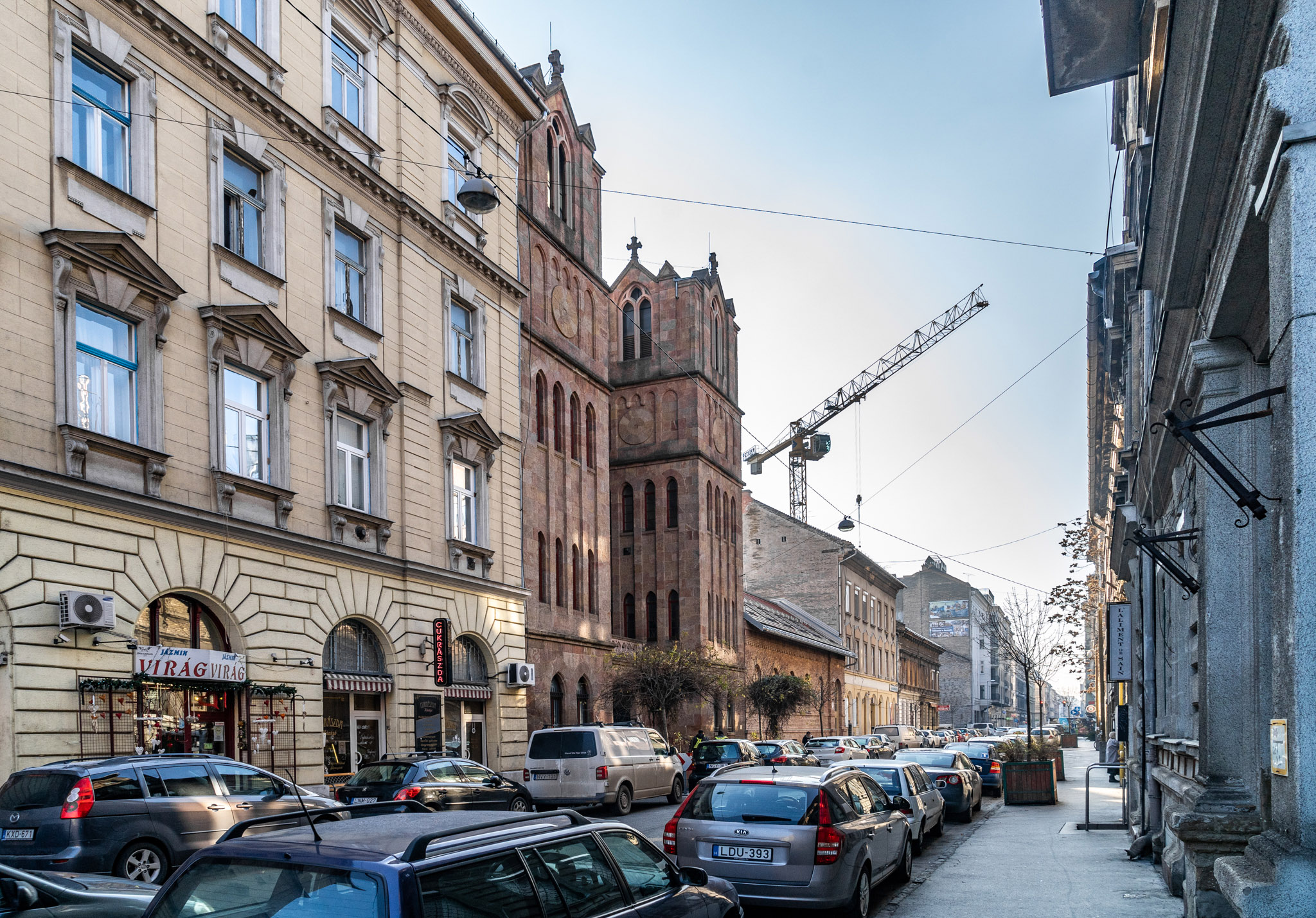
The Church of the Holy Family in Terézváros stands almost hidden between the houses of Szondi Street (Photo: Balázs Both/Pestbuda.hu)
The chapel dedicated to the Holy Family serves the outermost part of Terézváros near City Park. The chapel was converted from a stable. The congregation wished to move forward from this temporary state quickly and build a large church. However, the project progressed slowly over the next decade.
The 22 November 1931 issue of Nemzeti Ujság wrote: “It is common knowledge that the congregation had planned to construct a monumental church on a deserted corner of Epres-kert, which the Ministry of Culture and the City Council blocked. The city then offered the plot of an abandoned residential building for the congregation to use for the church. This presented the designing architect, with a massive challenge, as the huge church, with a planned capacity of 2500 faithful, would have to be built in a narrow plot, surrounded on three sides."
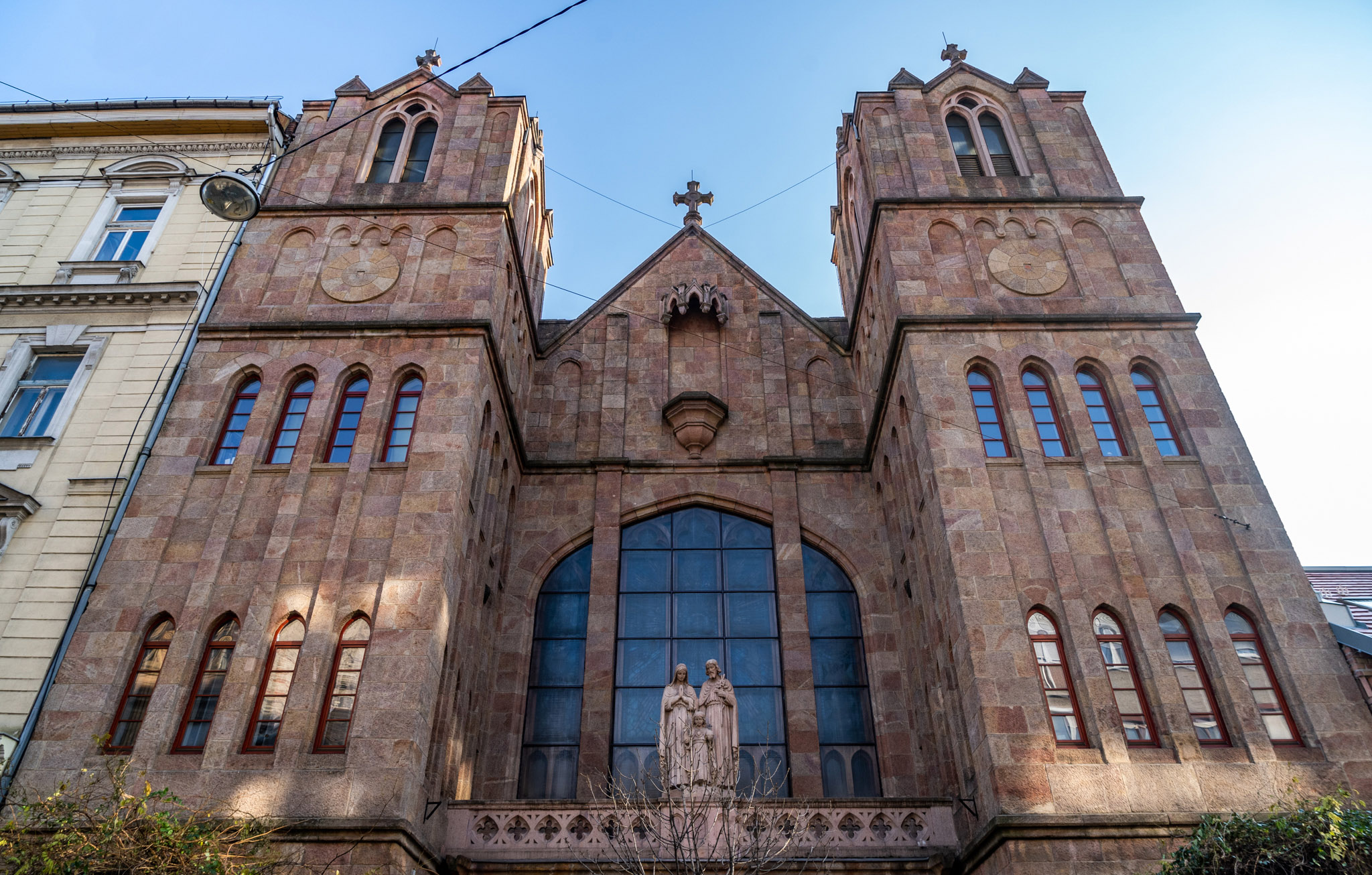
The facade of the Church of the Holy Family in Terézváros today. The Tudor arched windows, reminiscent of English Gothic architecture are striking features of the Church. (Photo: Balázs Both/Pestbuda.hu)
According to contemporary reports, 2 Lendvay Street, 8 Vilma Királyné Road and 106 Andrássy Avenue were raised as possible locations. Eventually, the foundation stone of the future church was laid on 28 September 1930. The plans of the building were made by the architect Gáspár Fábián. Fábián was a significant architect. The Ottokár Prohászka Memorial Church in Székesfehérvár is considered his most famous work, but several important buildings of his oeuvre can be found in Budapest. For example, the building of Szent Margit Secondary School in Buda and the parish church on Haller Square in Ferencváros.
The church was completed just over a year later and consecrated on 15 November 1931 by Assistant Bishop István Breyer.
The towers of the Church of the Holy Family in Terézváros (Photo: Balázs Both/Pestbuda.hu)
The building is eclectic but dominated by elements of mediaeval church architecture. Its facade is reminiscent of Romanesque churches, but the details, especially the huge Tudor arched windows between the two towers, clearly evoke English Gothic architecture.
The English Gothic style also influenced the interior, in the issue of Nemzeti Ujság quoted above a description reads: “The beautiful monumental structure of the sanctuary is particularly prominent and attractive. A beautiful altar stands at its centre, ringed in the stunning painted windows of the shrine. Under the large reinforced concrete vaults of the name, the walls are divided by huge windows, making the church light and airy despite being surrounded on three sides. The decorative glazing of the windows of the choir is outstanding and makes the church appear in the colour of deep passion to passers-by on the street. The church is illuminated in line with the most modern advancements with splendid chandeliers and wall lamps that complement the interior harmony.”
Interior of the Church of the Holy Family Church in Terézváros, designed by Gáspár Fábián, with the original main altar, from the January 1932 issue of Ország-Világ.
Sadly, the interior can only be admired in fragments. The building suffered serious damage during World War II. On 1 January 1945, at 12:12, a bomb struck the building. Apart from the crucifix that had stood beside the pulpit and a statue of Thérèse of Lisieux, the entire structure was destroyed.
Following reconstruction, the new church was consecrated by Prince-Primate József Mindszenty on 18 May 1948. Interestingly, Zoltán Kodály donated the costs of the new main altar and pulpit, which were completed in 1955. Kodály was a regular member of the congregation. The stunning fresco depicting the Holy Family's flight to Egypt by Péter Barba was completed in 1961.
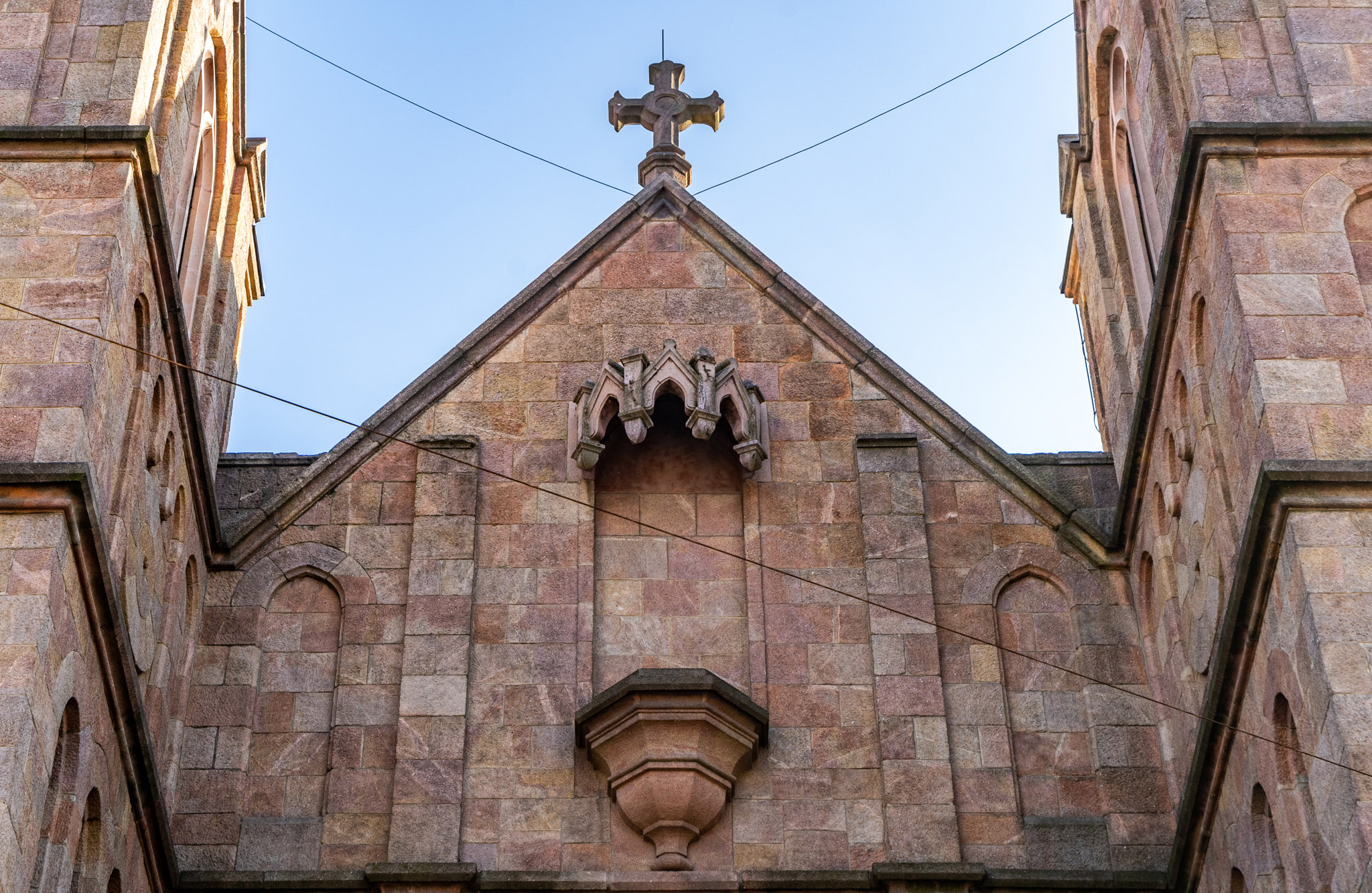
Detail of the facade of the Church of the Holy Family in Terézváros (Photo: Balázs Both/Pestbuda.hu)
The Church of the Holy Family in Terézváros shares much of its history with the Church of the Holy Family in Külső-Kőbánya. Sadly, no large-scale reconstruction was carried out here. Intended mainly for the working-class families of Kőbánya, a supporting chapel was completed in 1924. An independent parish was formed in 1929 and dedicated to the Holy Family. The parish was given two classrooms to use as a chapel in the school at 25 Kada Street. Once the capital had built a new school, the old school's entire building was given to the clergy in 1938. The Church of the Holy Family in Külső-Kőbánya, which was elevated to a Parish Church in 1996 still operates in the building.
The Year of the Family is an excellent opportunity to rediscover the churches dedicated to the Holy Family in Budapest. Family is not only a natural scene of human existence but also a mystery, to which the artworks of these churches take their observers closer.
Cover photo: The statue of the Holy Family on the facade of the Church of the Holy Family in Terézváros (Photo: Balázs Both/Pestbuda.hu)

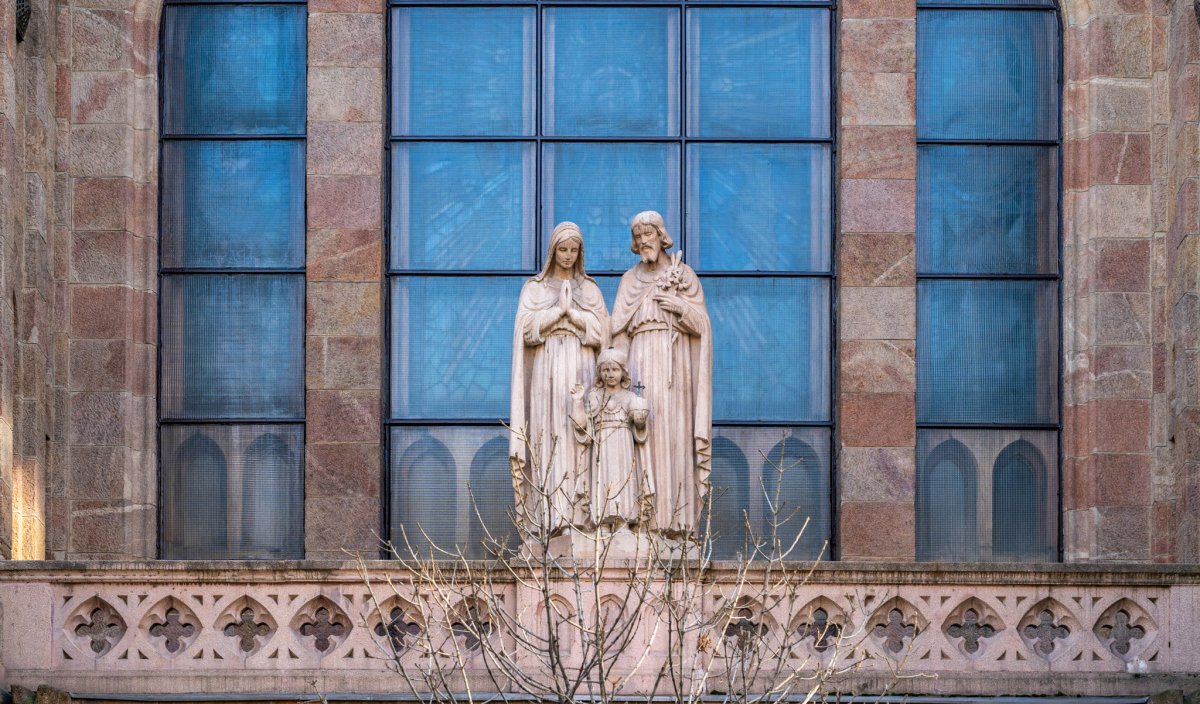



































Hozzászólások
Log in or register to comment!
Login Registration